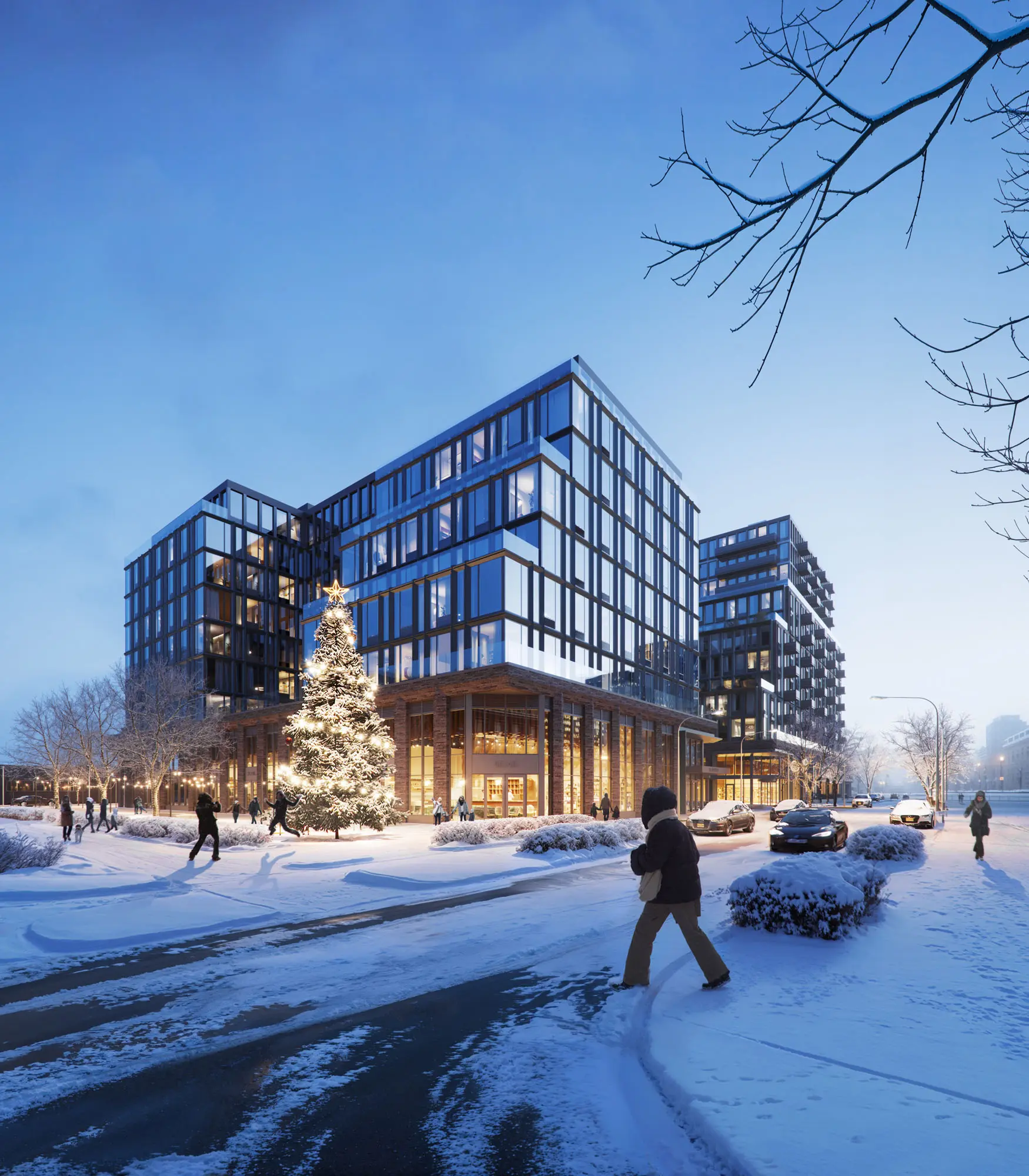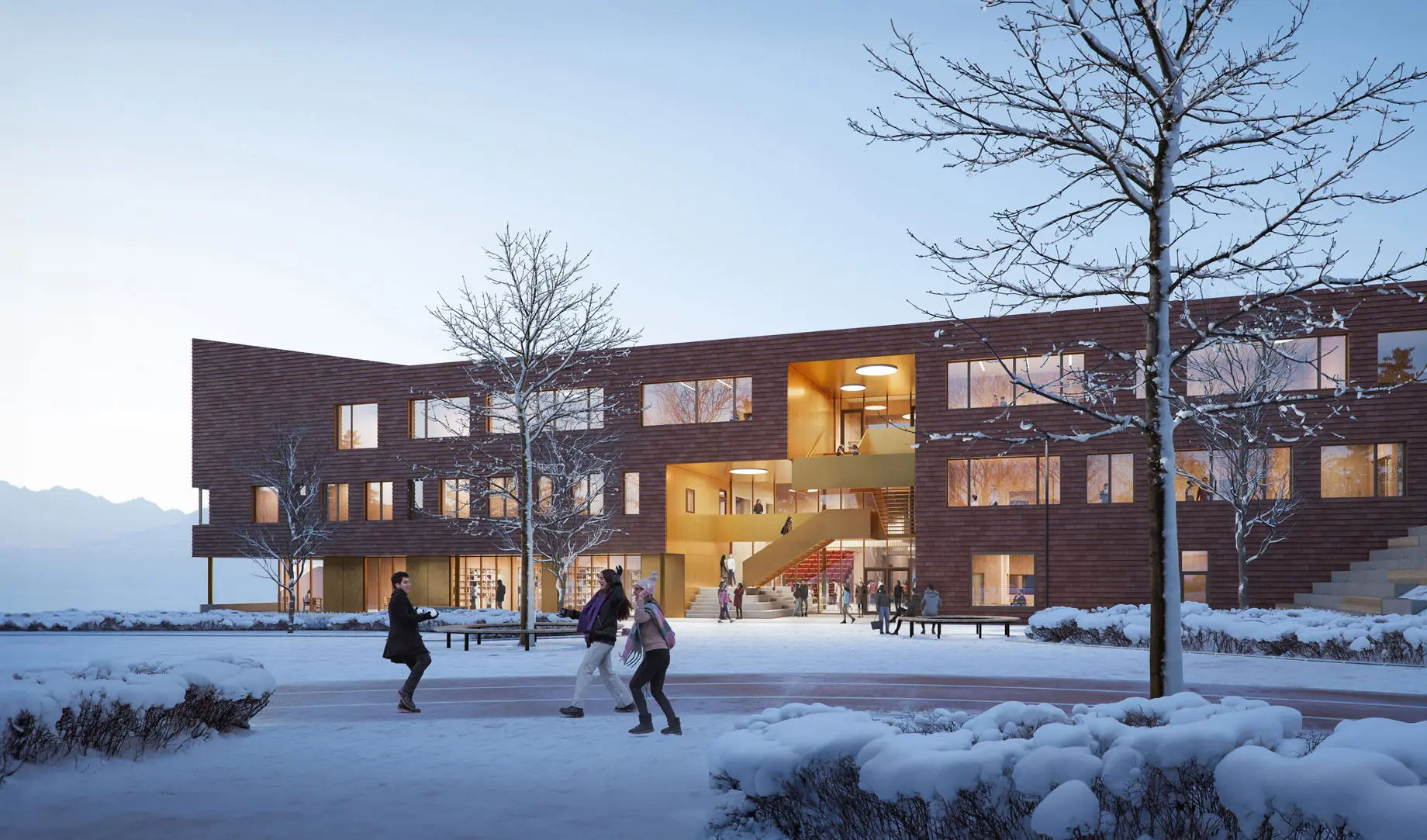“Form must have content, and that content must be connected to nature,” noted Alvar Aalto. How we perceive that connection depends directly on seasonality. Winter sets an especially rigorous test for architecture. A low solar angle emphasizes geometry, cool daylight reveals the nuances of texture, and snow and ice add complex reflections. Creating believable winter renders demands professional experience and the right skill set. In this article, we will examine practices for building realistic winter scenes, the tools and workflow required for winter rendering, applications in real estate development, and the urban context.
Why Winter Architectural Visualization is a Game-Changer
In countries where winter lasts for months and shapes everyday routines, projects are evaluated first in cold conditions. In Canada, as detailed in 3D Architectural Rendering in Montreal, and likewise in Scandinavia, the northern United States, and the Baltics, winter visualization shows whether an entrance canopy keeps the threshold dry on a slushy morning, whether a vestibule blocks the wind, and whether door swings clear the snowbanks after the first plow.
It clarifies whether storefront lighting reads in the blue hour, whether wayfinding remains legible in snowfall, and whether ramps and curb cuts keep traction when ice forms. With these checks, vulnerabilities surface early, and conversations with approving bodies move faster.
From a sales perspective, winter concentrates demand: November–December average ~19% of annual U.S. retail, 2024 holiday sales rose 4% to a record $994.1B, and 2025 retail is projected to grow 2.7–3.7%.
Elevating Your Brand Image with Stunning Winter Scenes
Winter is when care becomes visible. A scene with short daylight, fresh snow outside, and a warm glow at the door tells people what your brand stands for before they read a word. If the threshold stays dry, the vestibule feels calm, and the route is obvious even in flurries, the message is clear: you thought about your users. That feeling of being looked after is the fastest way to trust.
Winter also carries its own set of emotions. The hush after snowfall, the promise of gathering and celebration. When your visuals pick up those cues—soft light on faces, a place to wait without wind, a view that makes hot coffee make sense—you attach your brand to comfort rather than claims. It reads as hospitality, not marketing.

Mastering the Art of 3D Winter Renders
Believability in a winter scene rests on three things: materials, lighting and tools. When each is handled with discipline, the render reads as a real place and supports the architectural idea.
Realistic Snow and Ice: Techniques for Immersive Visuals
For Photorealistic Architectural Rendering, the scene should treat snow and ice as real materials. Snow has volume and grain, scatters light softly, compacts where people walk, and gathers on horizontal edges, along plinths, and in recesses, breaking into fine granules near entrances. Ice behaves differently. It turns slightly cloudy, holds microcracks, creates varied reflections, and leaves a thin film of water on contact surfaces. When these behaviors are present, the image reads as a real place with damp stone, muted metal, a trace of rime on handrails, and clear paths formed by foot traffic. These cues support the facade and help the viewer accept the scene as true to life.

Capturing the Mood: The Role of Lighting in Cold Temps
When textures are tuned and materials look believable, light is what brings the scene to life and sets the mood in winter 3d renders. It makes the space legible, reveals depth, and helps you feel a warm welcome even when it’s cold outside.
Natural light in winter sits lower and feels softer; it stretches shadows and adds a quiet tone to the frame. Artificial light takes care of the person: it feels warmer at the entrance, calmer along the route, cozier by the window. A well-crafted winter render doesn’t argue with the architecture; it gently suggests where to go and where to linger. If you want to step into the image, pause at the door, look inside, and stay, the lighting is working—both for atmosphere and for the design intent.
This emphasis matters most in comfort-first projects—especially educational environments—where balanced daylight and well-planned electric lighting reduce eye strain and support visual health. In our visuals, we test seasonal daylight scenarios, show how sun-shading works, illustrate desk orientation relative to windows, and depict light shelves and fixture layouts. We also communicate glare control, uniform brightness, appropriate color temperature, and clear wayfinding—so the render proves that the space is gentle on the eyes yet welcoming in mood. Learn more about project types and visualization nuances in Architectural Renderings for Schools.

Essential Tools and Software for High-Quality Winter Renderings
To render materials and lighting realistically, you need more than ideas; you need licensed, up-to-date tools: render engines, winter sky HDRIs, photometric light profiles, a library of winter materials, and seasonal assets. In winter scenes, small things decide credibility: how snow settles at the threshold, how ice catches a highlight, how a warm entry reads against a cold street. These details register immediately, and without the right stack, they cannot be reproduced consistently. If you work with a professional studio, you don’t have to worry about the technical side: the team uses this toolkit daily, keeps it current, suggests appropriate solutions, and offers several presentation options tailored to your brand.


